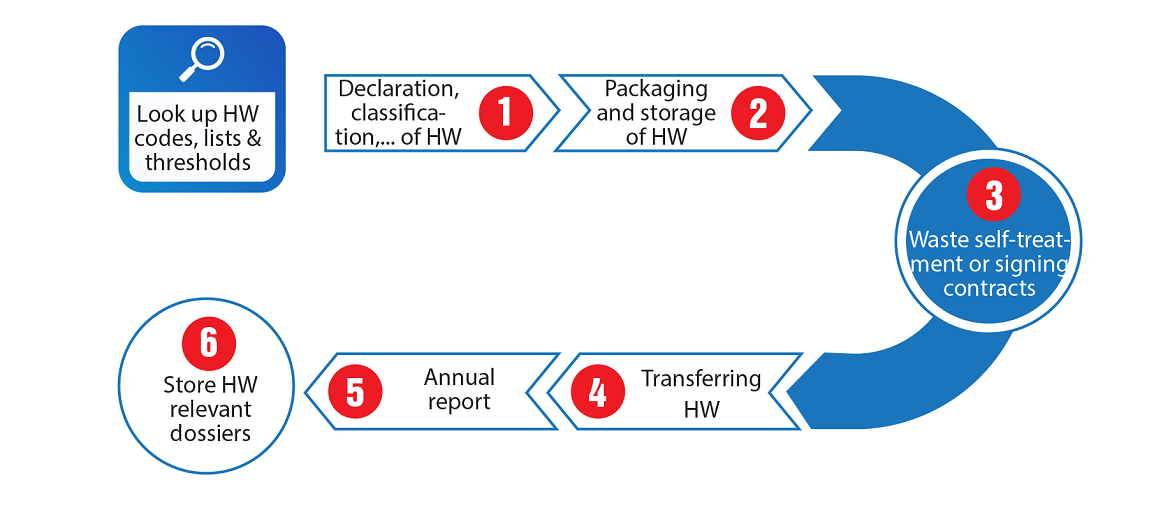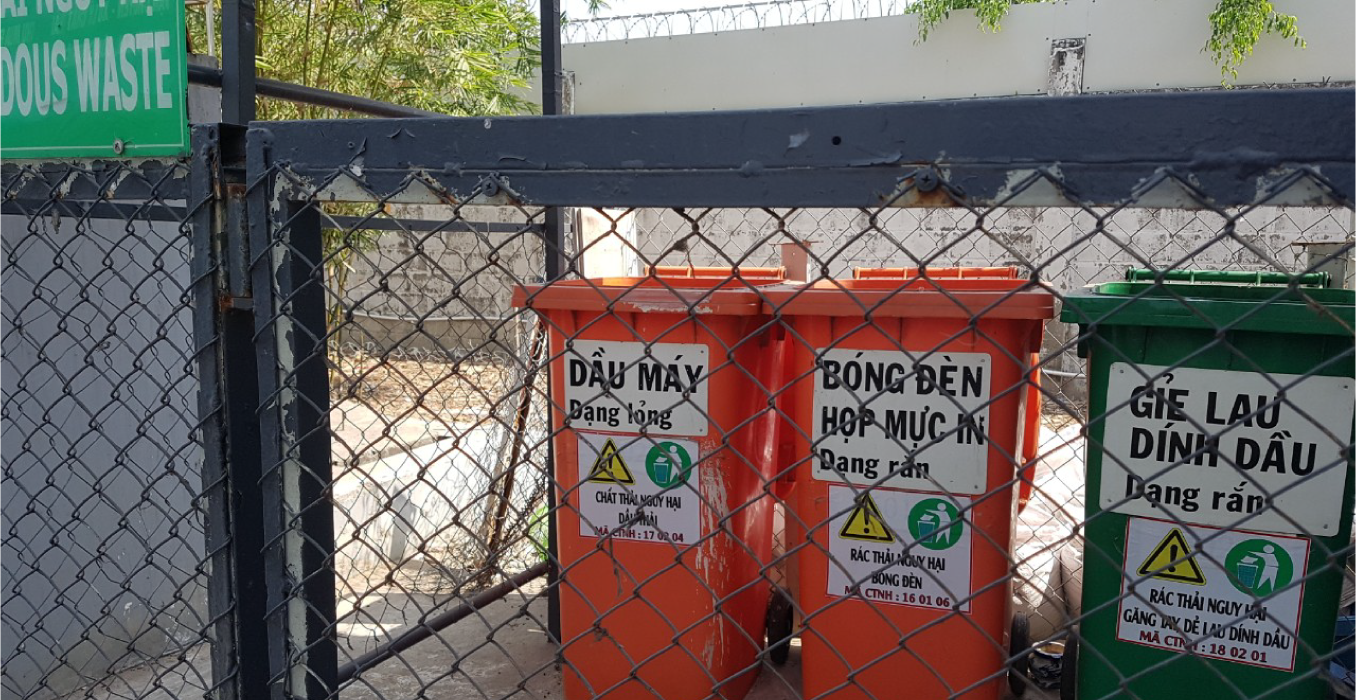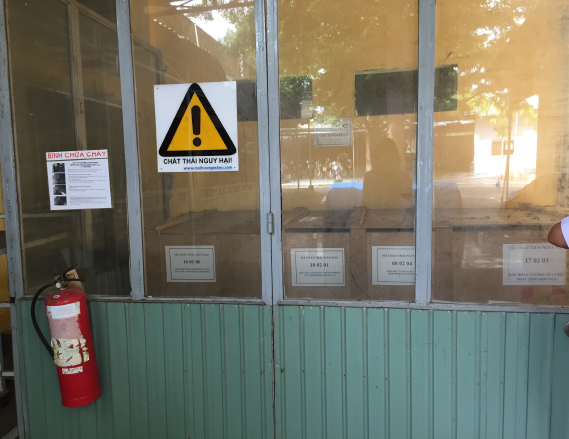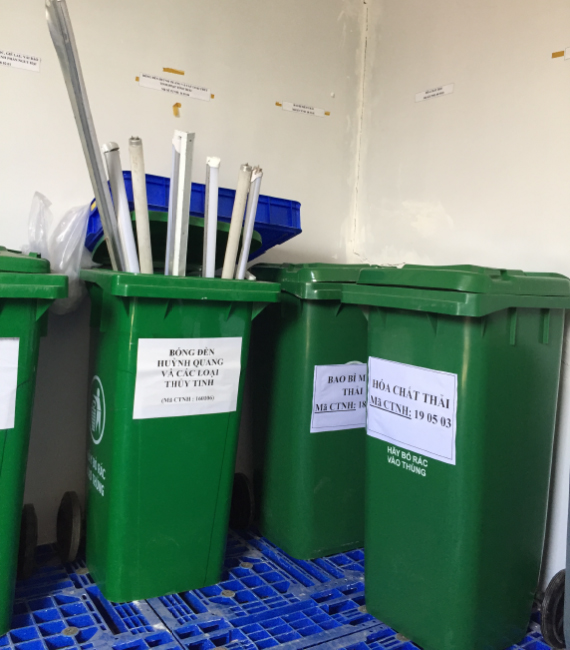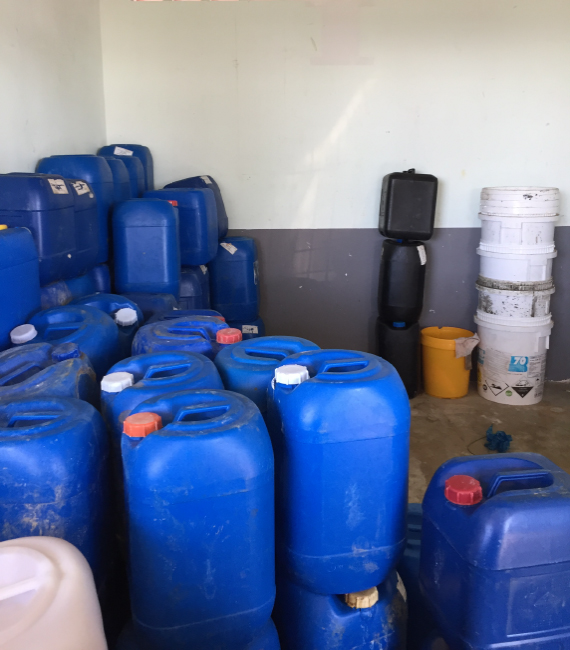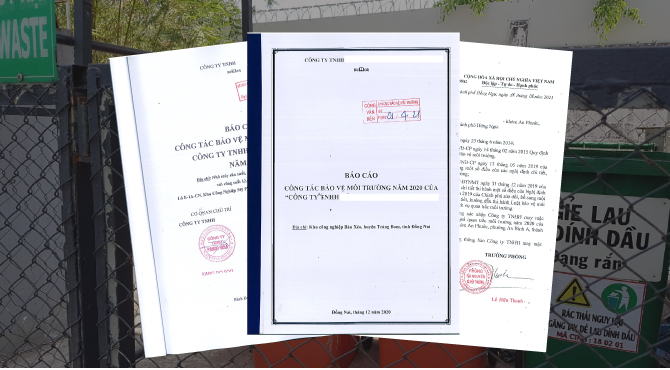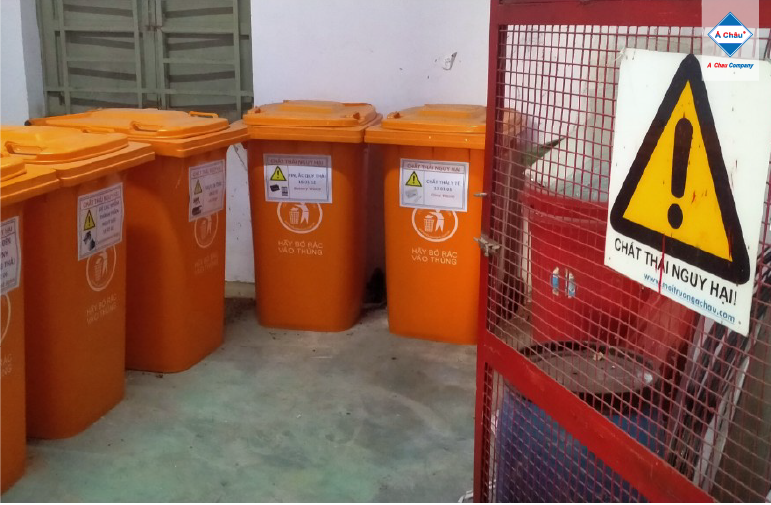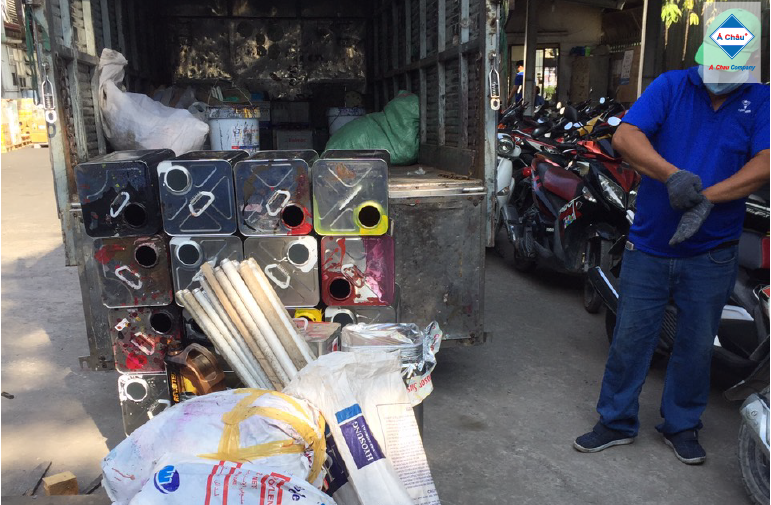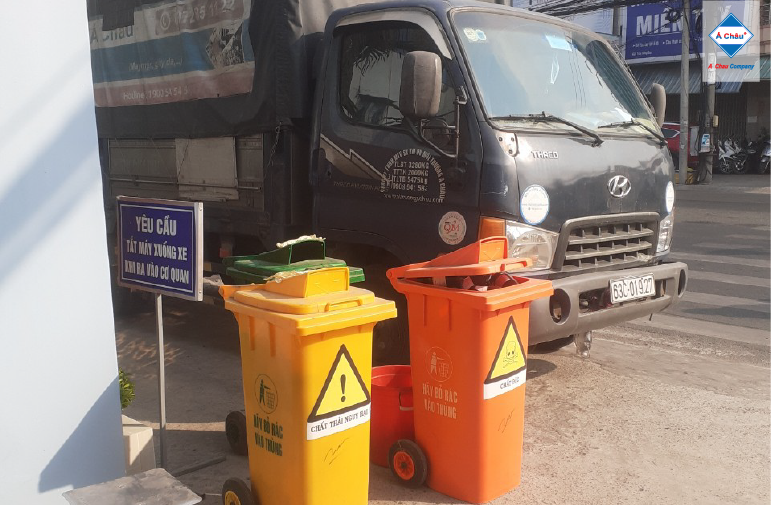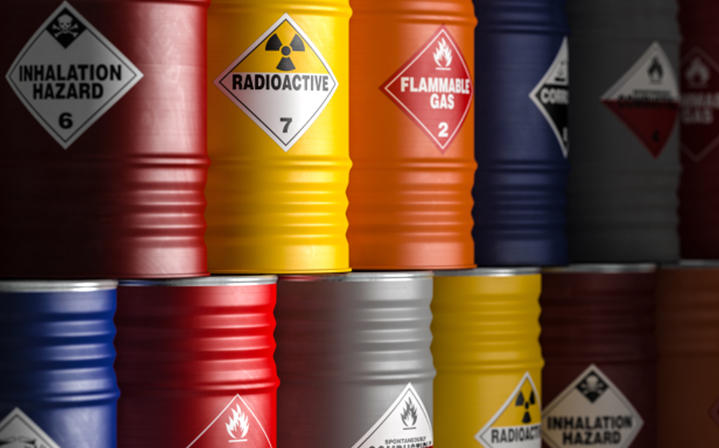
Transporting and treating hazardous waste
Introduction
What is hazardous waste (HW)?
Hazardous waste (HW) is defined as waste that contains toxic, radioactive, infectious, flammable, explosive, corrosive, toxic, or other hazardous properties (According to Article 3 - Law on Protection of the Environment No. 72/2020/QH14); generated primarily in production - business - service activities, some typical hazardous wastes include fluorescent light bulbs, waste lubricant oil, batteries, accumulators, sticky wipes,.. and other types of packaging, containers with lubricants, chemicals, paints, inks,... due Because of their high toxicity, Hazardous wastes are managed under very strict regulations, from classification to storage to transportation and treatment.
Legal basis for hazardous waste management:
- Law No. 72/2020/QH14 of the National Assembly: Law on Environmental Protection
- Decree No. 08/2022/ND-CP of the Government: detailing a number of articles of the Law on Environmental Protection
- Circular No. 02/2022/TT-BTNMT of the Ministry of Natural Resources and Environment: detailing a number of articles of the Law on Environmental Protection
The above documents replaces the following expired documents:
- Law No. 55/2014/QH13 of the National Assembly: Law on Environmental Protection
- Decree No. 38/2015/ND-CP of the Government: On waste and scrap management
- Circular No. 36/2015/TT-BTNMT of the Ministry of Natural Resources and Environment: On hazardous waste management
The process of hazardous waste (HW) management:
Some common hazardous waste (HW) and controlled industrial waste (CIW)
- Fluorescent tubes and other mercury-containing waste (code: 16 01 06)
- Batteries and accumulators (code: 16 01 12)
- Synthetic engine, gear and lubricating oils (code: 17 02 03)
- Soft/ Metallic/ Hard plastic packaging containing residues of or contaminated by hazardous substances (code: 18 01 01, 18 01 02, 18 01 03)
- Waste ink/ printing toner containing hazardous substances (code: 08 02 01, 08 02 04)
- Discarded electrical and electronic equipment (code: 16 01 13)
- Absorbents, filter materials, wiping cloths, protective clothing contaminated by hazardous substances (code: 18 02 01)
- Infectious waste (including sharp waste) from the process of medical examination, treatment and prevention of human diseases (code: 13 01 01)
- ....
Identification, classification and labelling of HW
Determination the list of waste
The list of hazardous wastes and codes of each hazardous waste are specified in the attached Appendix - Circular No. 02/2022/TT-BTNMT. Hazardous waste must be classified from the moment it is stored or transported for treatment.
Labeling
The storage device includes the following information:
The name and code of the hazardous waste, the name and address of the location where the hazardous waste is generated, the date the packaging begins; warning and prevention signs in accordance with TCVN 6707:2009 with a minimum size of 05 (five) cm in each direction.
In the main hazardous waste storage area:
Warning and prevention signs suit for hazardous wastes that are stored, in accordance with TCVN 6707:2009. with a minimum size of 30cm in each direction
Technical requirement and management procedure for hazardous waste source owner
Hazardous wastes will be classified, packaged, labeled and stored in separate equipment and storage areas in accordance with regulations.
Storage Packaging For Hazardous Waste:
Hazardous waste packaging (hard or soft) will ensure that hazardous wastes are not damaged or broken during storage;
Sealing the soft packaging, hard packaging with tight-fitting lids to prevent waste from leaking or evaporating;
Liquid waste, slurry, or waste containing the volatile hazardous ingredients must be contained in a hard packaging that is not more than 90% full, or the maximum container level is 10 cm from the package's upper limit.
Equipment for storing hazardous waste:
Ensuring the safe storage of hazardous wastes at the connection point and the position of loading, unloading, or loading and discharging waste to avoid leakage;
The hard structure withstands impact and is not damaged, deformed, or torn by the weight of waste while in use;
Equipment for storing hazardous wastes in liquid form or with volatile hazardous components must have a tight-fitting lid with a maximum storage level of 10cm from the storage device's upper limit.
Warning signs in accordance with Vietnam Standard TCVN 6707:2009, with a minimum size of 30cm in each direction.
The hazardous waste storage area must meet the following requirements:
The floor in the hazardous waste storage area must be tight and impermeable in order to prevent rainwater from overflowing from the outside.
Having a roof to cover the sun and rain for the entire hazardous waste storage area;
Having methods to prevent groups of hazardous waste from chemically reacting with one another;
Ensuring that no liquid is spilled to the outside when there is an incident of leakage or spillage;
The storage area for flammable and explosive hazardous wastes must be kept at least 10m away from boilers and other burning equipment.
The hazardous waste storage area must be equipped with the following:
Firefighting equipment;
Absorbent materials (such as dry sand or sawdust) and shovels are available for use in the event of a leak, spill the liquid hazardous waste;
For medical waste, the storage area must comply with the following regulations: Circular No. 20/2021/TT-BYT - Medical waste management on the premises of the facility medical.
Responsibilities of waste source owner
Declaring the volume and type of hazardous waste in the environmental license application or the contents of the environmental registration. If the amount or type of hazardous waste generated changes, the project owner or facility must report the change in the project's periodic environmental protection report;
Identifying, classifying, collecting, and storing hazardous waste separately and not mixing with non-hazardous waste to avoid environmental pollution;
Self-reuse, recycling, treating, co-processing and recovering energy or transferring the hazardous wastes to establishments with appropriate environmental licenses for treatment.
Classified hazardous waste must be stored separately;
Hazardous waste must not be mixed with normal waste;
The storage must not result in release of dust or leakage of liquid waste into the environment;
Hazardous waste shall be only stored for a given period of time as prescribed by law.
HW generators take the responsibility for designating an area for temporary storage of hazardous waste; store hazardous waste in packaging or containers which satisfy environmental protection requirements prescribed by the MONRE.
*Waste code is the column that shows the code for each type of waste, including hazardous waste (HW), controlled industrial waste (CIW) and normal industrial solid waste (NISW), in Appendix III - attached to Circular No. 02/2022/TT-BTNMT
Signing the transportation – treatment contract
Hazardous waste transfer
Waste source owners are responsible for monitoring and supervising the transfer and treatment of hazardous wastes, strictly following the process of declaring and using hazardous waste documents for each time of hazardous waste transfer as prescribed in Circular No. 02/2022/TT-BTNMT.
HAZARDOUS WASTE DOCUMENTS:
The HW owner shall transfer and coordinate with the owner of the facility providing HW treatment services or the unit performing the HW transportation to prepare HW documents for each transfer.A set of HW documents includes the following links:
- Document No. 1: Stored at the owner of the facility providing HW treatment services No.1 or the unit performing the transportation of HWs;
- Document No. 2: Stored at the owner of HW treatment facility No.2 (where HW treatment is performed) - if any;
- Document No. 3: Stored at the HW owner (after transporting HWs);
- Document No. 4: Stored at the HW owner (the owner of the facility providing HW treatment services sends it back after the HW treatment has been completed);
Form: Form No. 04 - HW documents – attached in Appendix III – Circular No. 02/2022/TT-BTNMT
After 06 months from the date of HW transfer, if the last two copies of the HW document are not received without a reasonable written reason from the HW-receiving organization or individual, the HW source owner must report to the regulatory agency on environmental protection at the provincial level or the MONRE for inspection and handling according to legal regulations.
*HW documents are documents showing information on HWs that have been collected and handled.
Periodic report
General integration in the periodic report on environmental protection (report period is from 01/01 to 31/12, and report is sent to management agencies before 05/01 of the following year).
The provision process of services
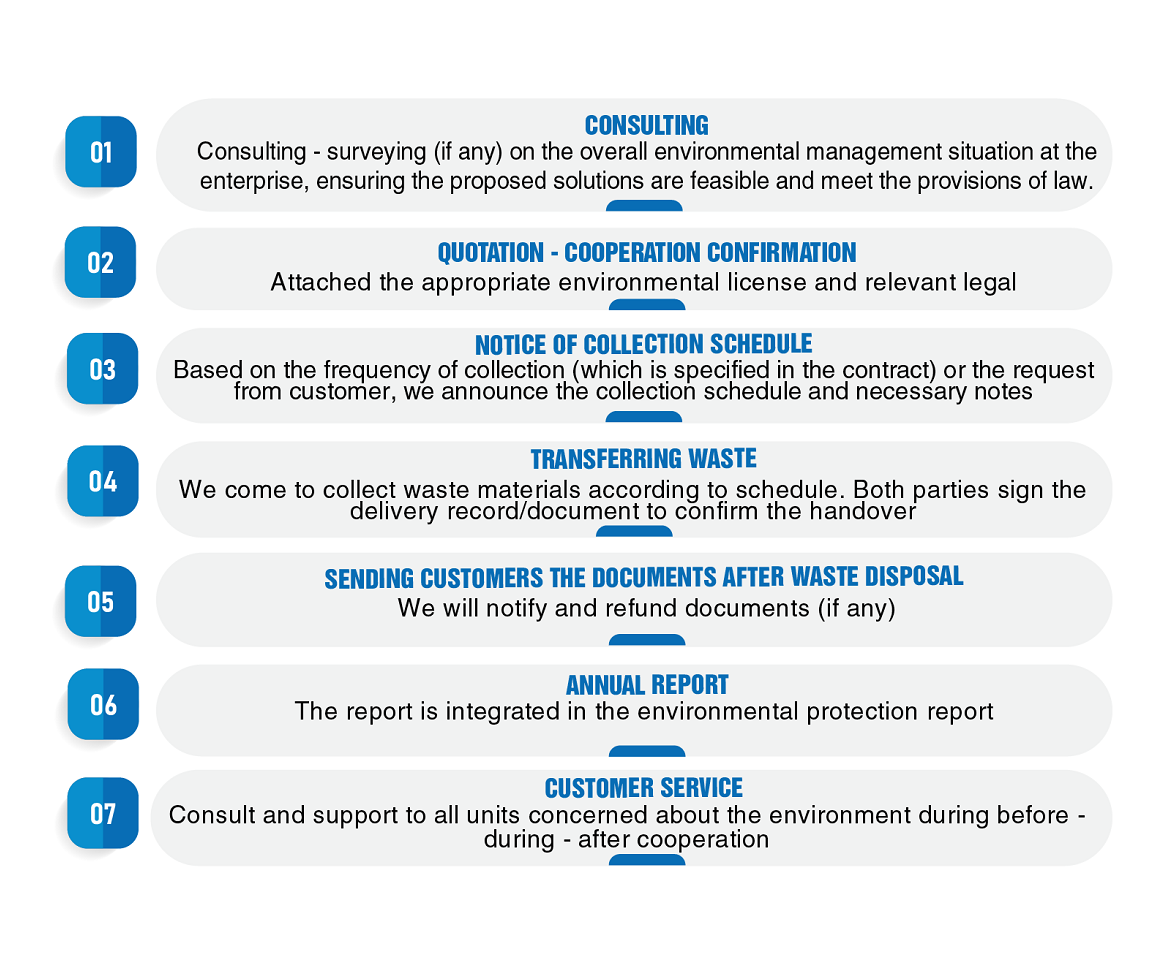
Quotation
Only 03 minutes of operation to receive direct quotations/contracts - public; save time; simplify and optimally meet the customers's different needs of environmental service !
Our regional Customer & Partner services center in Vietnam:
Northern Services Center: 033 8351122
Central Services Center: 0902 450585
HCMC – Eastern Services Center: 033 8351122
Southern Services Center: 0902 912586



